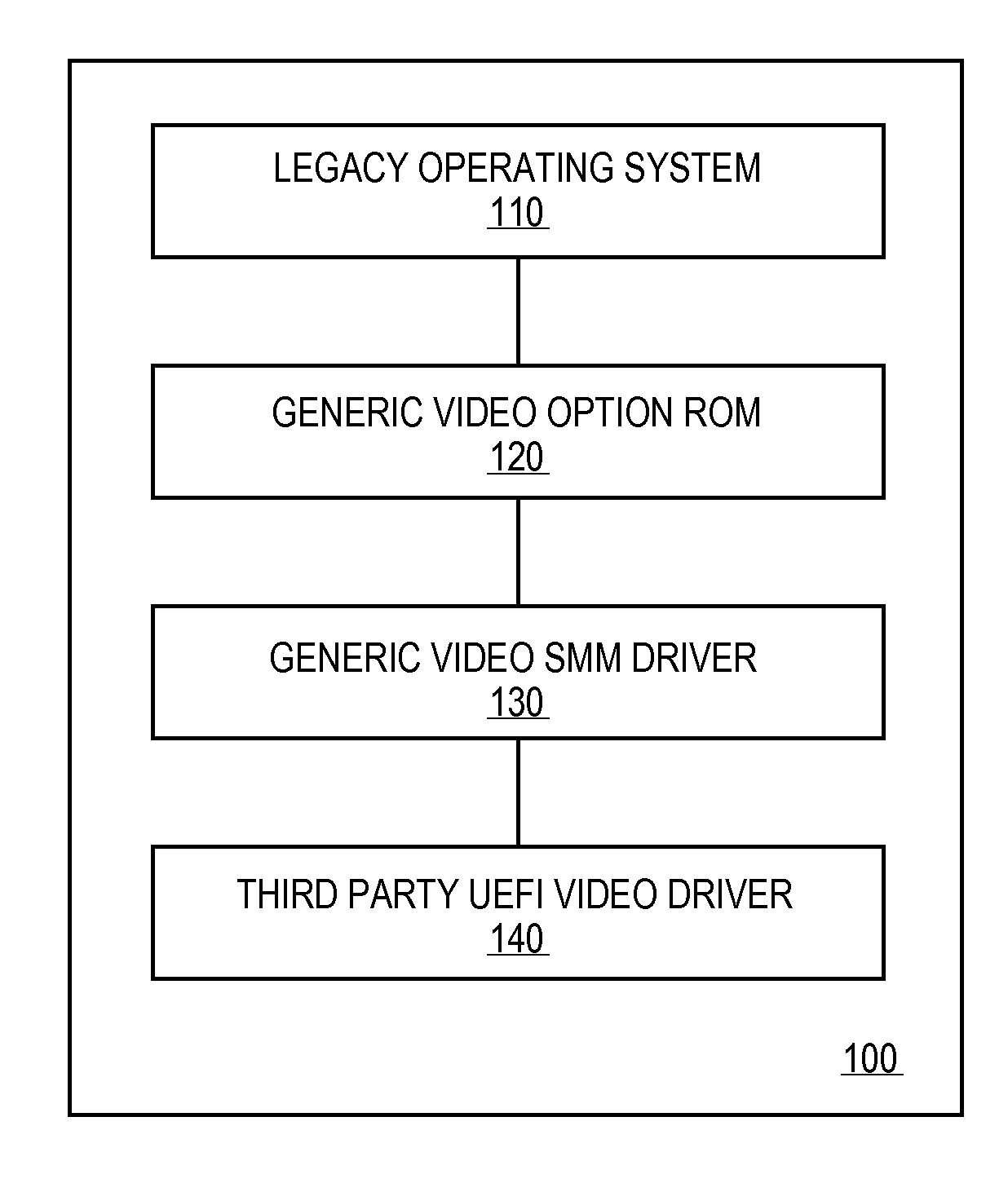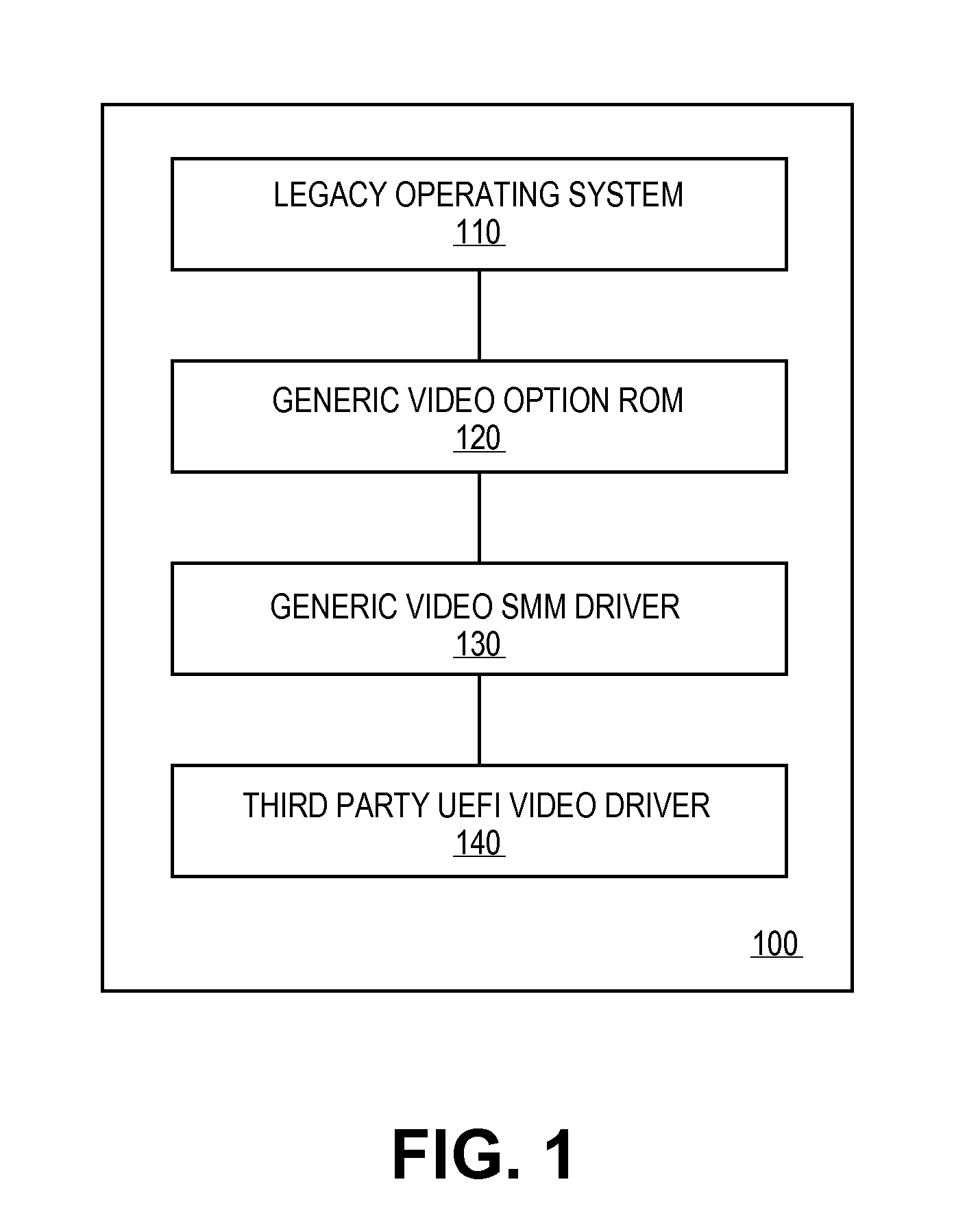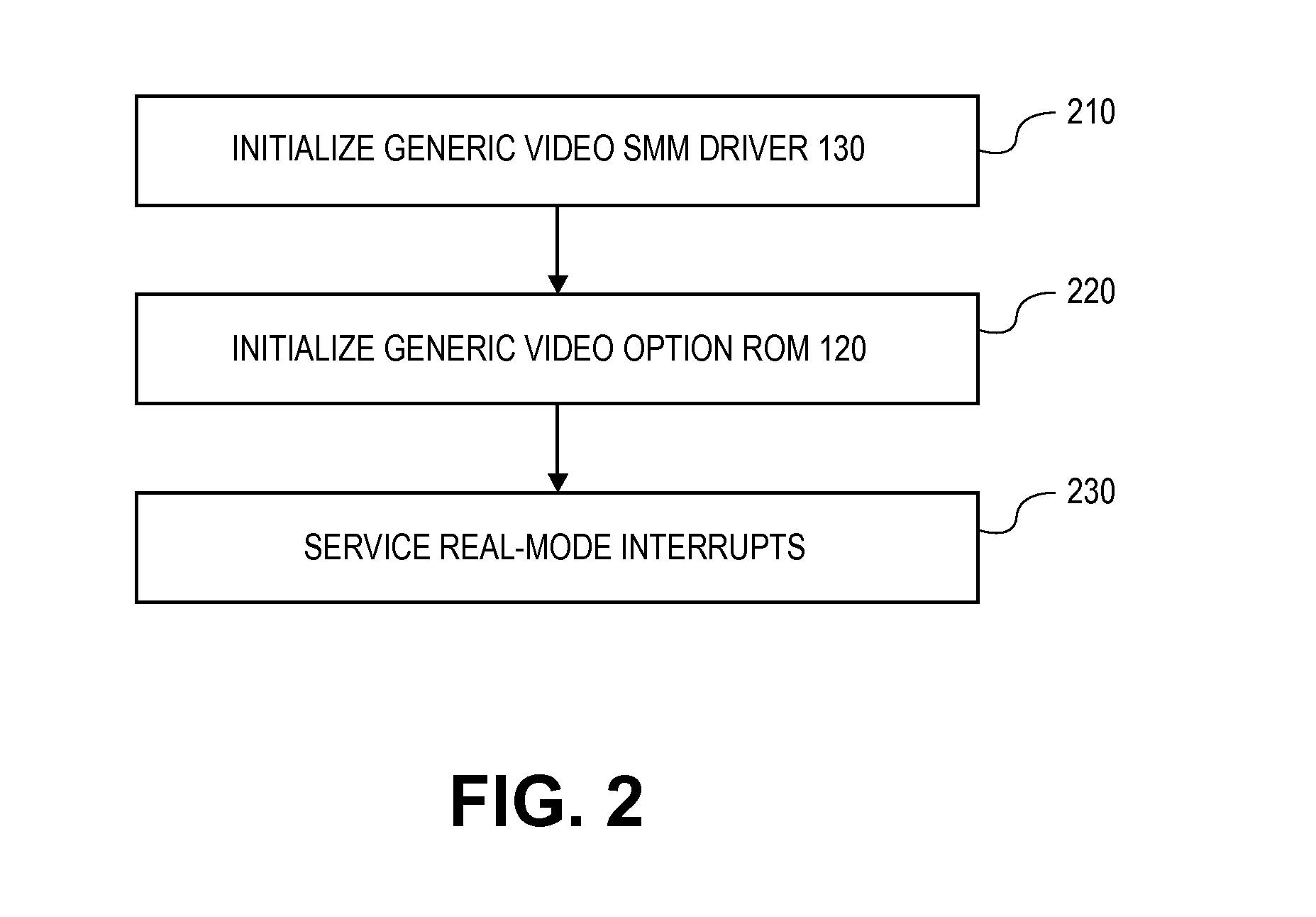Emulating legacy video using uefi
a video interface and legacy technology, applied in the field of emulated legacy video interfaces, can solve the problems of not supporting being booted using the legacy approach, more complex devices, and not supporting being booted using the efi/uefi approach
- Summary
- Abstract
- Description
- Claims
- Application Information
AI Technical Summary
Problems solved by technology
Method used
Image
Examples
Embodiment Construction
[0021]Approaches for supporting the video requirements of older operating systems using the facilities provided by a third party UEFI video driver are described. In the following description, for the purposes of explanation, numerous specific details are set forth in order to provide a thorough understanding of the embodiments of the invention presented herein. It will be apparent, however, that the embodiments of the invention presented herein may be practiced without these specific details. In other instances, well-known structures and devices are shown in block diagram form in order to avoid unnecessarily obscuring the embodiments of the invention presented herein.
Functional Overview
[0022]Embodiments of the invention enable a third party UEFI video driver to support the video requirements of older operating systems. FIG. 1 is a high-level block diagram of a computer system 100 according to an embodiment of the invention. As shown in FIG. 1, computer system 100 includes a legacy o...
PUM
 Login to View More
Login to View More Abstract
Description
Claims
Application Information
 Login to View More
Login to View More - R&D
- Intellectual Property
- Life Sciences
- Materials
- Tech Scout
- Unparalleled Data Quality
- Higher Quality Content
- 60% Fewer Hallucinations
Browse by: Latest US Patents, China's latest patents, Technical Efficacy Thesaurus, Application Domain, Technology Topic, Popular Technical Reports.
© 2025 PatSnap. All rights reserved.Legal|Privacy policy|Modern Slavery Act Transparency Statement|Sitemap|About US| Contact US: help@patsnap.com



